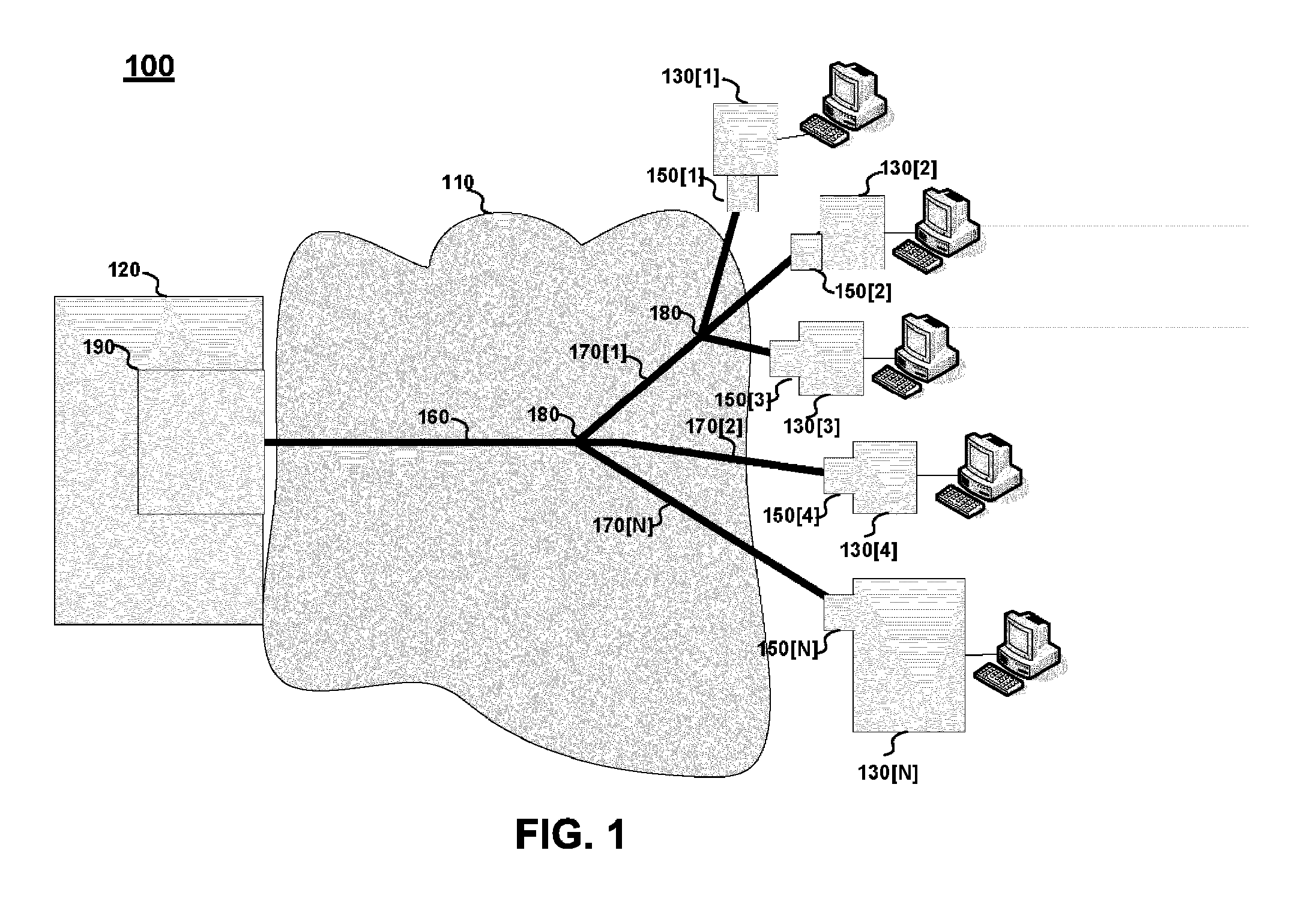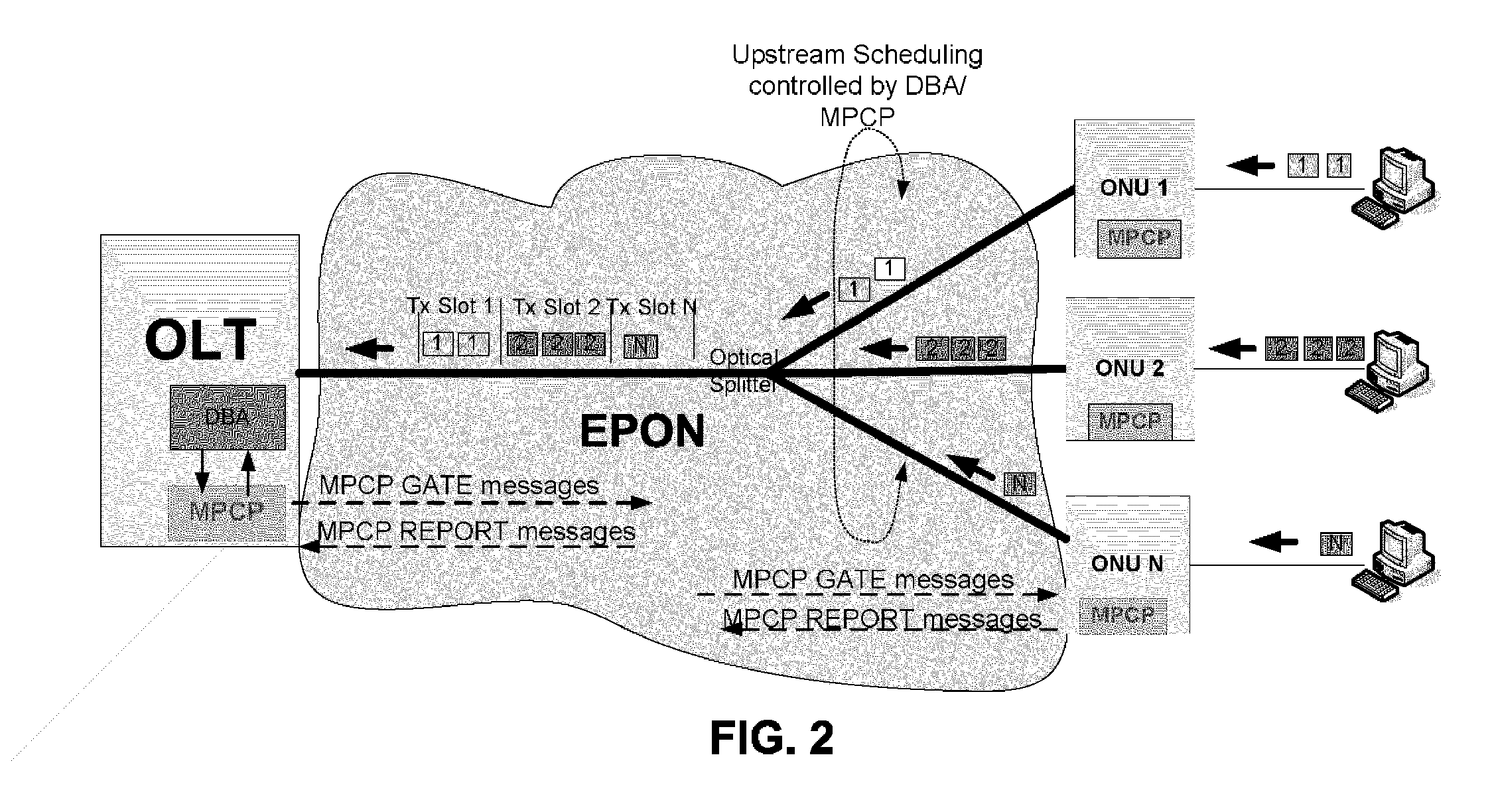Intelligent bandwidth allocation for ethernet passive optical networks
a passive optical network and intelligent technology, applied in data switching networks, multiplex communication, digital transmission, etc., can solve the problems of imposing enormous pressure on carriers to upgrade their existing networks, infirming the relatively limited bandwidth and reliability of ethernet passive optical networks, and accelerating the growth of internet protocol (ip) data traffic, etc., to achieve the effect of prohibitively complex
- Summary
- Abstract
- Description
- Claims
- Application Information
AI Technical Summary
Benefits of technology
Problems solved by technology
Method used
Image
Examples
Embodiment Construction
[0067] Illustrative examples of our invention will now be presented with further reference to the attached drawing. With reference now to FIG. 3, there is shown a block diagram of our inventive DBA implementation 300 of an OLT device. As presently embodied, our implementation 300 of the OLT is a combination of a highly-integrated chipset and associated software.
[0068] Accordingly, our implementation includes our inventive intelligent DBA algorithms (not specifically shown) which interact with an efficient MPCP module 370 to efficiently control upstream bandwidth allocation among registered ONUs in the EPON. As presently embodied, our chipset can support the dynamic bandwidth allocation among up to 64 ONUs (390[1] . . . 390[64]) per EPON port 380, for a total of 256 ONUs across four EPON ports of the current device. Importantly, our device is not specifically limited to only four EPON ports, and a number of supported ONUs in excess of the current 256 is both anticipated and expected...
PUM
 Login to View More
Login to View More Abstract
Description
Claims
Application Information
 Login to View More
Login to View More - R&D
- Intellectual Property
- Life Sciences
- Materials
- Tech Scout
- Unparalleled Data Quality
- Higher Quality Content
- 60% Fewer Hallucinations
Browse by: Latest US Patents, China's latest patents, Technical Efficacy Thesaurus, Application Domain, Technology Topic, Popular Technical Reports.
© 2025 PatSnap. All rights reserved.Legal|Privacy policy|Modern Slavery Act Transparency Statement|Sitemap|About US| Contact US: help@patsnap.com



